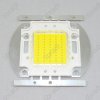Greetings
I bougth a 50W Led that is rated at 30-34 Vdc with a IF of 1500mA
(**broken link removed**)
I would like to use it to do video illumination powered by a battery array.
- Don't know what batteries to use in order to get the most running time out of it
- Also unsure what DC-DC Step Up circuit I should make for it :/
Is it better to pack batteries in parallel with lower voltage like the RC batts that are rated 3.6v 4700mAh and drain them with the DC-DC Stepper or with higher voltage batteries like the square 9v rated at 200mah
Instead of a DC-DC Stepper is it better to stack batteries to run this, like 4 x 9V 200mah series, and use a resistance to limit the current to the led?
If anyone could help me out finding the info would much aprecciate, i'm trying to learn electronics by miself and i find it difficult at times :|
I bougth a 50W Led that is rated at 30-34 Vdc with a IF of 1500mA
(**broken link removed**)
I would like to use it to do video illumination powered by a battery array.
- Don't know what batteries to use in order to get the most running time out of it
- Also unsure what DC-DC Step Up circuit I should make for it :/
Is it better to pack batteries in parallel with lower voltage like the RC batts that are rated 3.6v 4700mAh and drain them with the DC-DC Stepper or with higher voltage batteries like the square 9v rated at 200mah
Instead of a DC-DC Stepper is it better to stack batteries to run this, like 4 x 9V 200mah series, and use a resistance to limit the current to the led?
If anyone could help me out finding the info would much aprecciate, i'm trying to learn electronics by miself and i find it difficult at times :|

